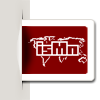We are sad to inform you today that our esteemed colleague Dr. Joachim Jaenecke died on December 11, 2024. We remember him with great reverence.
Over the course of his professional life in the music department of the Staatsbibliothek zu Berlin Preussischer Kulturbesitz (Berlin Prussian Cultural Heritage State Library), Joachim Jaenecke has always been highly committed to the interests of the music library scene in addition to his actual duties. He was president of the German group of IAML for many years and on the board of IAML international for several years.
His professional area of responsibility was primarily the area of printed music and so he was immediately ready to take part in the realignment of the International ISMN Agency since 2006 in the newly founded association with a new office in Berlin Steglitz as deputy chairman.
His professional competence, his personal commitment and his energy, which he brought into this work well into his retirement, have helped the International ISMN Agency greatly. We will keep his memory honorable.
ISMN International Agency
The board
January 2025

